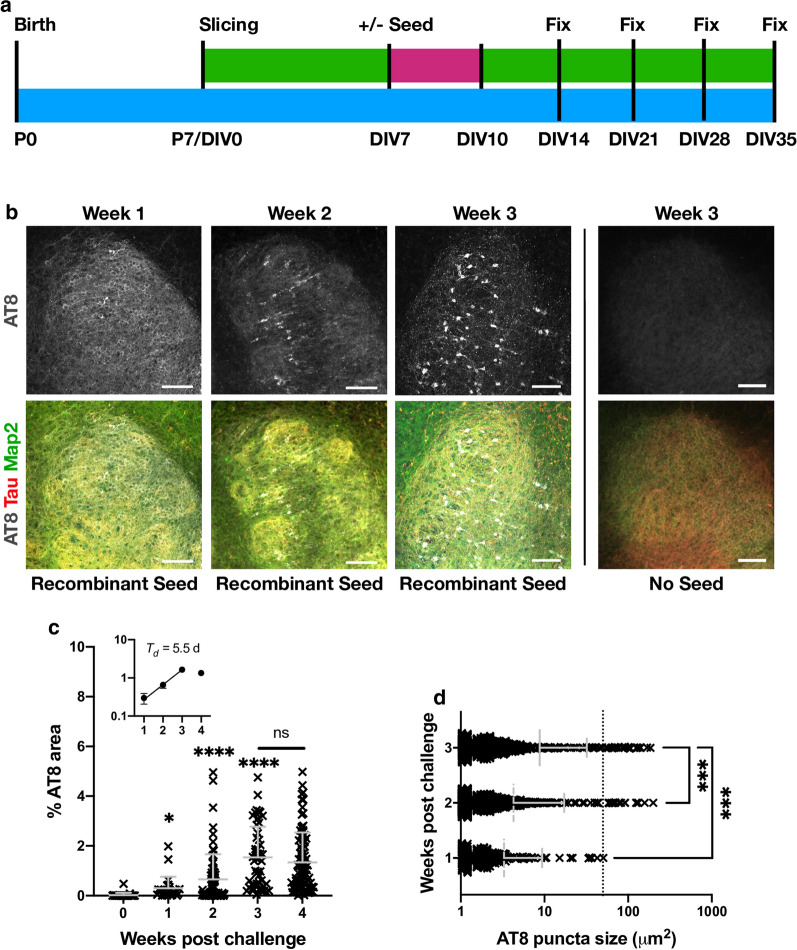Fig. 5.
Seeded aggregation occurs over three weeks. a Schematic of OHSC treatment. 100 nM recombinant tau assemblies were added to the media as previous and left for 3 days (pink) followed by a complete media change. Subsequently 50% media changes were performed twice weekly (green) until fixation at 1, 2, 3 or 4 weeks post challenge. b Slices fixed at 1 week post challenge display diffuse AT8 staining. Slices fixed at 2 or 3 weeks demonstrate increasing levels of AT8 reactivity in cell bodies and neurites. OHSCs not challenged with exogenous tau assemblies exhibit only diffuse background levels of AT8 reactivity. Scale bars, 100 µm. c Percent AT8-positive area increases over time following challenge with recombinant tau assemblies. Statistical significance determined by Kruskal–Wallis Test by ranks and Dunn’s multiple comparisons test compared to 0 weeks post challenge unless indicated (multiple fields imaged from slices from N = 3 mice, per time point. *P < 0.05, ****P < 0.0001). Inset represents the same data from weeks 1–4 plotted on a logarithmic scale. Doubling time (Td) estimated from linear regression curve fitted to data up to 3 weeks. d AT8 positive puncta increase in size following challenge with 100 nM recombinant assemblies. Dotted line at 50 µm2 represents approximate lower size limit of cell body-occupying lesions. Statistical significance determined by Kruskal–Wallis Test by ranks and Dunn’s multiple comparisons test (multiple fields imaged from slices from N = 3 mice at each time point. ***P < 0.001)

